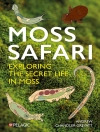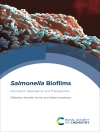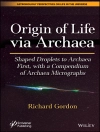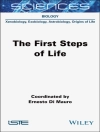Over the last decade, in vitro models have become more
sophisticated and are at a stage where they can provide an
effective alternative to in vivo experiments. Replacing Animal
Models provides scientists and technicians with a practical,
integrated guide to developing culture-based alternatives to in
vivo experiments.
The book is neither political nor polemical: it is technical,
illustrating by example how alternatives can be developed and used
and providing useful advice on developing others. After looking at
the reasons for and potential benefits of alternatives to animal
experiments, the book covers a range of methods and examples
emphasising the design considerations that went into each system.
The chapters also include ‘case studies’ that illustrate the ways
in which culture models can be used to answer a range of important
biological questions of direct relevance to human development,
physiology, disease and healing.
The thesis of this book is not that all animal experimentation
can be replaced, now or in the near future, by equally effective or
superior alternatives. Rather, the premise is that there is
substantial opportunity, here and now, to do some common types of
experiment better in vitro than in vivo, and that doing so will
result in both scientific and ethical gains.
Cuprins
Contributors, vii
Preface, xi
Section 1 Introductory Material
1 Potential Advantages of Using Biomimetic Alternatives, 3
Jamie Davies
2 Overview of Biomimetic Alternatives, 13
Jamie Davies
Section 2 Culture Methods
3 Pancreatic Islets, 23
Eli C Lewis
4 Endometrial Organoid Culture, 35
Merja Blauer
5 Modelling Lymphatic and Blood Capillary Patterning, 45
Francoise Bruyere, Catherine Maillard, Charlotte Erpicum and
Agnes Noel
6 Precision-cut Lung Slices (PCLS), 57
Christian Martin and Stefan Uhlig
7 Human Colon Tissue in Organ Culture, 69
Michael K Dame and James Varani
8 Fetal Organ Culture, 81
Jamie Davies
9 Design of a Mechanical Loading Device to Culture Intact Bovine
Spinal Motion Segments under Multiaxial Motion, 89
Jochen Walser, Stephen John Ferguson and Benjamin
Gantenbein-Ritter
10 Magnetic Assembly of Tissue Surrogates, 107
Chien-Yu Fu and Hwan-You Chang
11 Assembly of Renal Tissues by Cellular Self-organization,
115
Mathieu Unbekandt
Section 3 Case Studies of Use
12 Hierarchical Screening of Pathways: Using Cell and Organ
Cultures to Reduce use of Transgenic Mice, 125
Guangping Tai and Jamie Davies
13 Lung Organoid Culture to Study Responses to Viruses,
137
Wenxin Wu, J Leland Booth and Jordan P Metcalf
14 Organ-cultured Human Skin for the Study of Epithelial Cell
Invasion of Stroma, 151
James Varani
15 Organotypic Mandibular Cultures for the Study of Inflammatory
Bone Pathology, 159
Alastair J Sloan, Sarah Y Taylor and Emma L Smith
16 Three-dimensional, High-density and Tissue Engineered Culture
Models of Articular Cartilage, 167
Ali Mobasheri, Sara Kelly, Abigail L. Clutterbuck, Constanze
Buhrmann and Mehdi Shakibaei
17 Concluding Remarks, 193
Jamie Davies
Appendix 1 Sources of funding for development of
culture-based alternatives, 195
Appendix 2 Databases and web-based discussions relevant
to development of alternatives, 197
Index, 199
Despre autor
Professor Jamie A. Davies, Centre for Integrative Physiology, Hugh Robson Building, George Square, University of Edinburgh, Edinburgh.












